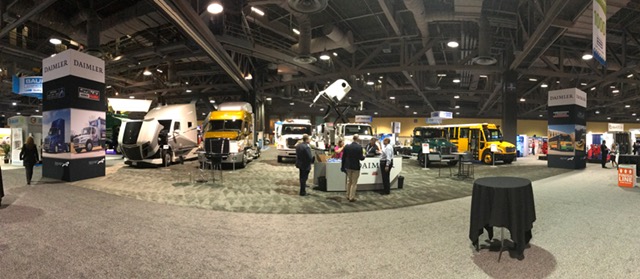
This being my fourth ACT Expo that I have had the privilege of attending, I have noticed the evolution of alternative fuels developing from a possible few choices to many that are now available. When I first starting attending these alternative fuel showcases, the main choice for heavy-duty trucking was either CNG (compressed natural gas) or LNG (liquefied natural gas). The need for fleets and customers to reduce their emissions and meet certain goals throughout the years has given rise to more competition in alternative fuels and brought with it hybrid technologies, hydrogen fuel-cell prototypes and even the promise of an eventual all-electric possibility. With all of the choices however, you might ask of the many available, which one will ultimately reign supreme?
Being an early adopter of alternative fuel trucking, I chose CNG technology because at the time, it boasted comparable horsepower to the diesel engines I had been running and had a steadily growing network of fueling stations along most major corridors. The direction that natural gas has gone, with Cummins releasing the near-zero emissions 9-liter for production and slating the 12-liter near-zero emission engine for early 2018, points this technology in the right direction to continue to lead natural gas technology as the “head of the pack” in medium-duty and heavy-duty trucking. To help this fuel secure its place, you still have major players in truck stop fueling stations investing into partnerships for infrastructure, which paves the path forward for this technology to continue to dominate alternative fuels.
While hydrogen fuel-cell technology has come a long way to now having test units working in the California ports, the uphill battle I see it facing is a lack of fueling infrastructure, which is one of the hardest battles for any new alternative fuel option. Having essentially nothing but water as an emission is a wonderful idea and could be great for the environment, but the question of “Where to get the fuel?” will continue to hinder this technology in my opinion for at least the regional to long-haul practicality.
A lot of focus was given this year to electrification as well, which faces its own particular set of problems to overcome. Even though the test trucks in the ports have seen success in moving containers, the real problem has been seen in the limited range a truck of this nature can travel before having to be recharged. So far from what we have seen, the only way to overcome this is with more batteries, which creates another problem in the increased weight added to the truck. This can be a great hindrance to those that haul in weight sensitive applications such as bulk hauling, dirt/rock/sand hauling and many other parts of trucking where the company is paid upon how much weight they can carry. Once this uphill challenge is overcome, then there is the environmental impact in considering what happens to all of these batteries once their useful life has been spent?
I am passionate about the impact that both cleaner-burning diesel engines and alternative fuels will have not only in shaping the trucking industry in the future, but also the environmental impacts that greener trucks will have in their doing so. Wanting to leave behind a cleaner footprint and less impact on the environment that I leave behind for my children always is a driving factor in my decision to operate cleaner-burning trucks than those of the past. Making sure that goal aligns with the operational costs of my company remains another important deciding factor, seeing as how any type of fuel is usually the number one cost for any trucking company. With the fact that I don’t see a day go by without some sort of news promising the “next big breakthrough” in alternative fuels, I eagerly read each new article and Facebook update to see new product developments. It will be interesting indeed to see which alternative fuel becomes the leader in medium to heavy-duty long haul and regional trucking. As for me, my money for alt-fuel of the future is on natural gas or some sort of natural gas/hydrogen-electric hybrid!